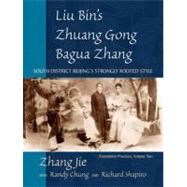Liu Bin's Zhuang Gong Bagua Zhang, Volume Two South District Beijing's Strongly Rooted Style
, by Zhang, Jie; Chung, Randy; Shapiro, Richard; Wigzell, Mark; Baller, William- ISBN: 9781583944653 | 1583944656
- Cover: Paperback
- Copyright: 8/14/2012
Cheng Ting Hua was one of the most famous martial arts masters to emerge from nineteenth-century China. An unbeatable wrestler, he was the top disciple of Dong Hai Quan, the founder of Bagua Zhang. After his death during the Boxer Rebellion of 1900, Master Cheng's students continued to perfect the art they had inherited; from this time until the Cultural Revolution, they gathered in Beijing's South District to research, develop, and delve into the subtle methods of the art. and In Liu Bin's Zhuang Gong Bagua Zhang, Professor Zhang Jie documents the style of Bagua Zhang developed by Liu Bin, one of Cheng Ting Hua's top students. Professor Zhang became a disciple in this tradition in 1979, apprenticing under the well-known expert Liu Xing Han in Beijing. He was carefully trained for many years, practicing Bagua's circle-walking techniques under the trees of Temple of Heaven parkand-the same place where Dong Hai Quan, Cheng Ting Hua, and many other masters used to train. and A two-volume series, Liu Bin's Zhuang Gong Bagua Zhang gives equal attention to Bagua Zhang's history, its practice, and the culture from which it arose; Professor Zhang presents Bagua Zhang as a guide for everyday living, stressing the Chinese concept of balance in all things. While volume one instructed students in the fundamentals of Bagua practice (stances and footwork, the circle walk, and the single palm change), volume two teaches variations on the single palm change; the eight mother palms; the twenty-four movements of eight animals, three levels form; and beginning weapons training. Step-by-step photos and descriptions document the forms, while never-before-published historical photographs and first-hand accounts of the development of the art provide a rich background for the practical instruction. Volume two also goes further into the history of Liu Bin's lineage, including profiles of many notable Bagua masters. The author's personal contact with many of these masters, including ones that risked their lives to carry on the tradition through the Cultural Revolution, allows him to record their stories in vivid detail.







